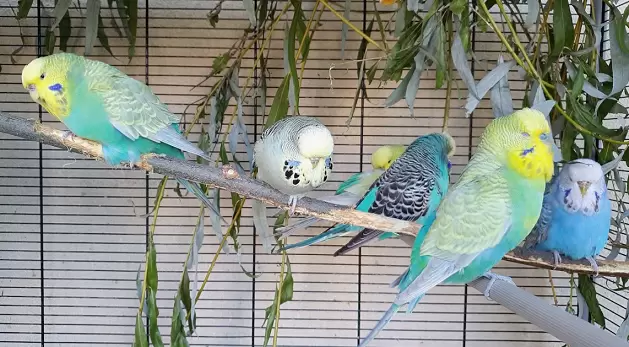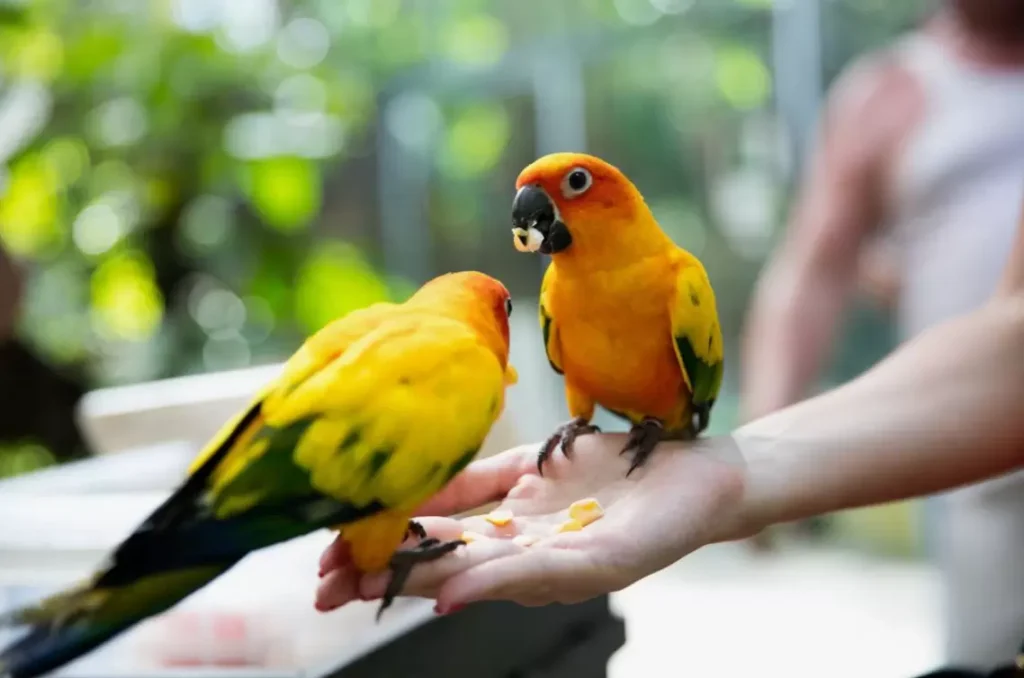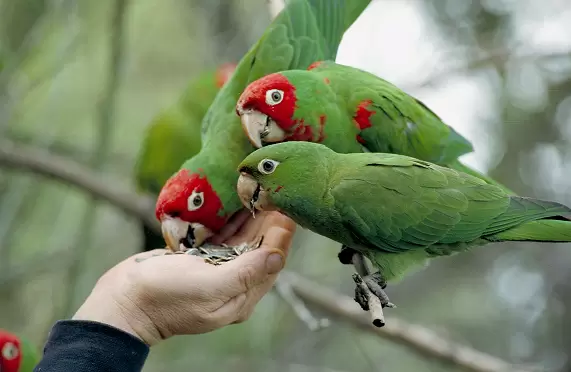When considering welcoming a feathered friend into your home, it’s natural to wonder if parrots bite? While parrots are intelligent, social animals, their wild instincts and strong beaks mean misunderstandings can sometimes lead to nips.
However, parrot bites tend to result from a place of fear, frustration or miscommunication rather than true aggression. With proper care, training and respect for their boundaries, the risk of bites can be greatly reduced.
In this comprehensive guide, we’ll explore the reasons behind parrot nips, how temperament varies between species, techniques for confidently handling parrots, and steps you can take to minimize any potential for bites.
By learning parrot body language and behavior, their humans can form trusting relationships built on mutual understanding rather than apprehension.
Why Do Parrots Bite? Demystifying the Motivations Behind Parrot Nips:
There are several natural motivations why even well socialized parrots may resort to nipping on rare occasions:

1. Territorial Behavior
Like many animal species, parrots are territorial and perceive their cage or regular perching areas as their personal space. When frightened or surprised by a sudden intrusion, territorial parrots may instinctively nip as a mild warning. It’s best to allow parrots to approach you willingly rather than reach into their territory uninvited.
2. Food Aggression
Some parrots, especially those hand fed as babies, form an association that hands bring food. This can lead to nipping out of perceived competition if fingers are near during mealtimes. Avoid sharing snacks by hand and instead place food dishes inside cages to circumvent this trigger.
3. Hormonal Urges
Breeding season transforms parrots’ behavior as hormonal changes take effect. Birds become more defensive of their mates and may show aggression including nipping towards perceived threats. Monitor hormonal species closely and give pairs added space if breeding/nesting to reduce tension.
4. Fear or Stress
Loud noises, crowds, new environments, or improper handling techniques can overwhelm parrots bite and trigger bites borne of panic rather than malice. Signs like puffed feathers, frantic pacing or hissing signal when parrots feel unsafe and need reassurance or space.
5. Communication Errors
Parrots bite sometimes resort to gentle nips to redirect behaviors they don’t enjoy such as overly rough petting. Nibbles may also function as a ‘leave me alone’ message when parrots feel overstimulated. With understanding we can respect our parrots’ boundaries to prevent accidental bites.
Parrot Temperament Variations by Species:
Different parrot species naturally exhibit a range of temperaments depending on factors like size, intelligence level and evolutionary history in the wild. Let’s examine a few common pet parrot types:
Macaws
With their large stature and powerful beaks, macaws are capable of delivering strong bites if truly frightened or distressed. However, macaws also bond intensely to preferred humans and tend to be gentle when treated respectfully. Their bites usually result from a startle response rather than aggression.
Conjures
Smaller than macaws but still sizable, conjures like Henday or Sun Conjures frequently nip out behavioral issues if their mental and physical needs aren’t met. Proper socialization, environment enrichment like toys and training go a long way in taming nippy tendencies.
Budgies
Rarely capable of breaking skin, budgies measure among the gentlest parrot species. Soft nippers at most, budgies are generally very tame and enjoy interactions. However, mating season may spark occasional, non harmful nips due to hormonal changes in some individuals.
Cockatoos
Highly intelligent but wary of strangers, cockatoos mostly deliver so-called “love bites” to trusted humans by gumming fingers tenderly. Threat displays like hissing usually precede any nips motivated by fear responses rather than malice in this species.
Techniques for Safely Handling and Caring for Parrots:

Taking precautions during everyday interactions and care routines goes a long way in minimizing parrot stress:
Approach Calmly
Parrots can sense human anxiety which heightens their own tension. Move at an unhurried pace while speaking softly to defuse fear based nips before they occur.
Support the Whole Body
Never grab just tails, wings or legs as it stresses parrots unnecessarily. Fully cradling their weighted bodies feels more secure and less threatening.
Establish Trust With Training
Use clicker or target training to positively reinforce calm behavior near hands. Reward relaxed postures and gentle contact with treats over time to strengthen the association.
Read Their Body Language
Watch for stress signals like dilated pupils, raised feathers, tail bobbing or hissing. Respect when parrots communicate a need for personal space through body language to avoid potential nips.
Be Patient and Gentle
Rushed, rough handling may cause parrots to reactively nip. Introduce hands slowly with smooth, non threatening motions. Nurture shy birds gradually with understanding rather than force.
Provide Stimulation
Bored, under stimulated parrots prone to acting out can often be redirected onto appropriate toys. Rotating a variety of foraging and shredding toys keeps busy beaks occupied.
Minimize Loud Noises and Drastic Changes:
Sudden noises may startle parrots bite into defensive mode. Maintain calm, low key routines and environments ideal for the skittish nature of these companions.

Don’t Approach During Breeding Season:
Give hormonal birds space when nesting instincts take over. The occasional nip occurs due to protective tendencies, not true aggression at this time.
Frequently Asked Questions (FAQs):
Q: What happens if a parrot bites you?
A: It can lead to injury and even cause infection and bleeding.
Q: Can a parrot bite your finger?
A: Hands and fingers are common places they bite.
Q: Do parrots bite playfully?
A: Many birds may bite when they are feeling playful and are over stimulated.
Q: Should I worry about a parrot bite?
A: Bites aren’t only painful, but they can also be severe.
Q: What to do after a parrot bites you?
A: Use an antibiotic ointment and a band aid for a couple days.
Conclusion:
With education on body language and confidence when interacting properly supported rather than grabbing, most parrots can seamlessly coexist peacefully besides humans.
Rare nips usually signify an underlying need for reassurance rather than any intent towards harm. Establishing mutual trust and respect takes effort but pays off in joyous relationships built on understanding rather than fear.
By learning to “speak parrot“, their humans can keep both species feeling content and secure for many rewarding years together.

Rupert Boneham has been a prominent and celebrated blog writer since 2013, earning a reputation as one of the most renowned voices in the industry. With his exceptional ability to deliver engaging and insightful content, Rupert has captured the attention of a diverse audience, consistently standing out for his innovative and impactful writing. His deep knowledge and unique perspective have solidified his status as a leading figure in the blogging world, where his work continues to inspire and resonate with readers around the globe.